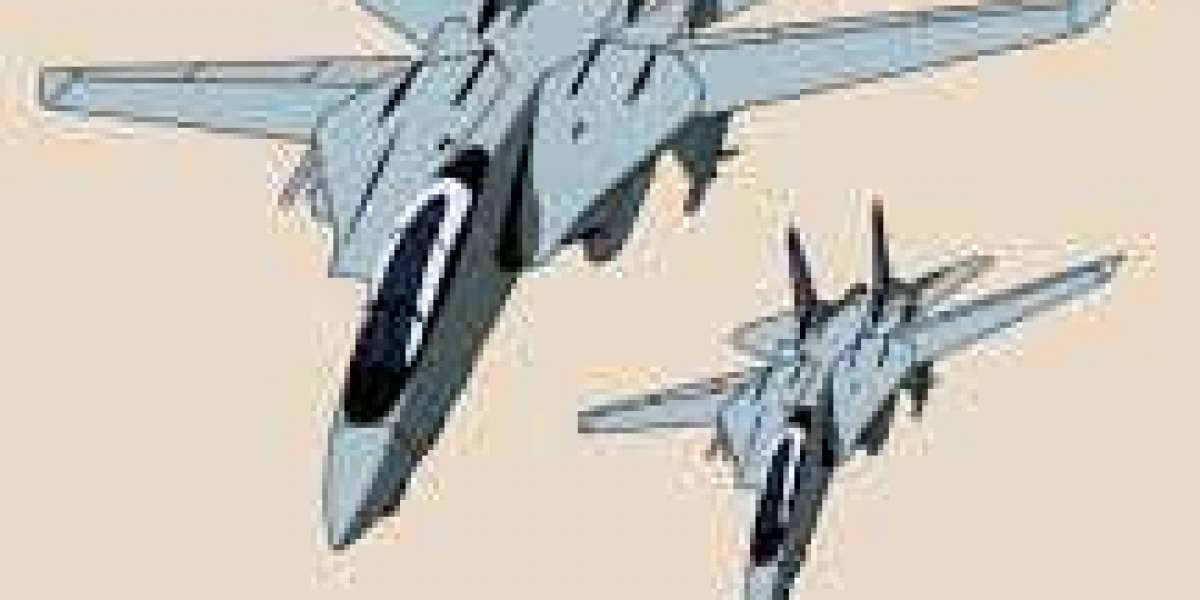Naval aviation has always been an integral part of a nation's defense strategy, providing a critical advantage in maritime operations. Among the many aircraft that have graced the decks of aircraft carriers, the F-14 Tomcat stands out as an iconic and versatile fighter jet. Over its decades of service, the Tomcat plane played a vital role in shaping naval aviation history.
Birth of a Legend
The F-14 Tomcat was developed by Grumman Aerospace Corporation in response to the United States Navy's need for a carrier-based interceptor to replace the aging F-4 Phantom II. The development program began in the late 1960s, and the first prototype took flight in December 1970. The Tomcat quickly garnered attention for its impressive capabilities and distinctive twin-engine design.
Versatile Capabilities
One of the key factors that set the F-14 Tomcat apart was its versatility. While primarily designed as an air superiority fighter, it had a wide range of mission profiles. Its primary role was to protect the carrier battle group from enemy aircraft and missiles, and it did so with unmatched efficiency.
Air Superiority
The F-14 was equipped with the AIM-54 Phoenix missile, one of the most potent air-to-air missiles of its time. With its long-range and multiple target tracking capabilities, the Tomcat could engage multiple enemy aircraft simultaneously, making it a formidable adversary in aerial combat.
Strike Warfare
In addition to its air superiority role, the Tomcat was adapted for strike missions. It could carry various air-to-ground munitions, including laser-guided bombs and anti-ship missiles. This versatility allowed it to engage a wide range of ground and naval targets effectively.
Fleet Defense
Tomcats also served as guardians of the carrier battle group, providing an umbrella of protection against incoming threats. Their powerful radar systems and air-to-air capabilities made them invaluable assets in ensuring the safety of the carrier and its accompanying ships.
Iconic Design
The F-14 Tomcat's distinctive design, featuring variable sweep wings and a twin-tail configuration, made it instantly recognizable. The variable geometry wings allowed for optimized performance at both low and high speeds, enhancing its maneuverability and versatility.
Operational History
The F-14 Tomcat saw action in various conflicts and operations during its service with the U.S. Navy. Notably, it played a significant role in the Gulf War, where it flew air superiority missions and delivered precision strikes against Iraqi targets. The Tomcat's presence in the Gulf War highlighted its adaptability and reliability in combat.
Sunset of the Tomcat
Despite its storied history and capabilities, the F-14 Tomcat was retired from active service in 2006, marking the end of an era in naval aviation. It was replaced by the F/A-18E/F Super Hornet, a more modern and versatile multi-role fighter. The retirement of the Tomcat was met with mixed emotions among those who had served alongside it and aviation enthusiasts worldwide.
Legacy and Influence
The F-14 Tomcat's legacy endures, not only in the annals of naval aviation history but also in popular culture. It gained fame through movies like "Top Gun," where it was immortalized as the aircraft of choice for Maverick and Goose. Additionally, its role in shaping the capabilities and strategies of naval aviation cannot be overstated.
Conclusion
The F-14 Tomcat remains a symbol of naval aviation excellence and adaptability. From its early days as a carrier-based interceptor to its later roles in strike warfare and fleet defense, the Tomcat proved itself to be a versatile and iconic aircraft.






